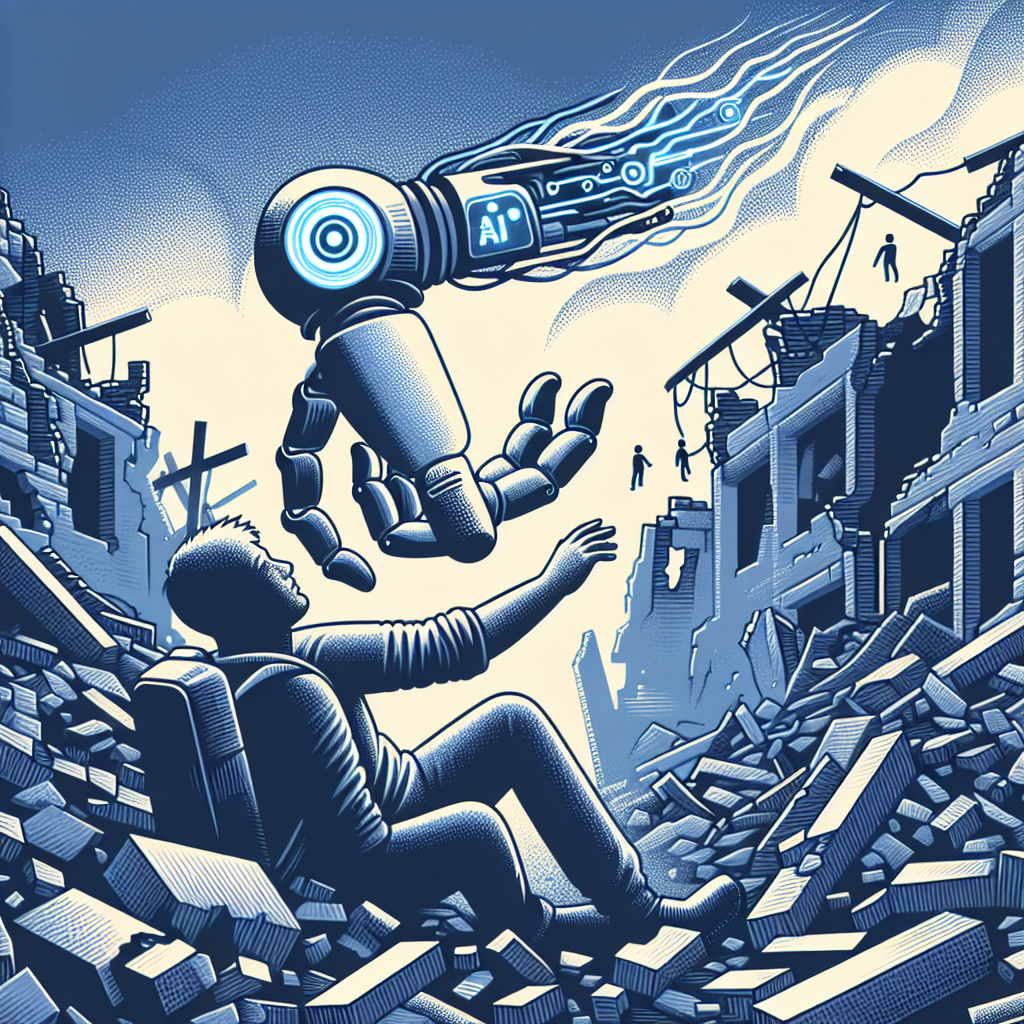Artificial Intelligence (AI) has revolutionized many industries, including disaster response. AI technology has the potential to improve the efficiency and effectiveness of disaster response efforts, including predicting disasters, assessing damage, and coordinating response activities. However, the increasing reliance on AI in disaster response also poses risks that must be carefully considered and managed to ensure that recovery efforts are successful.
One of the main risks of using AI in disaster response is the potential for errors and biases in the algorithms that power AI systems. AI systems rely on data to make decisions and predictions, and if the data used to train the AI is biased or incomplete, the AI system may make incorrect or biased decisions. For example, if an AI system is trained on historical data that contains biases against certain populations, the AI system may inadvertently discriminate against those populations in disaster response efforts.
Another risk of using AI in disaster response is the potential for technical failures or malfunctions. AI systems are complex and can be prone to errors, bugs, and malfunctions that can undermine the effectiveness of disaster response efforts. For example, if an AI system used to predict natural disasters malfunctions and provides inaccurate predictions, it could lead to inadequate preparation and response efforts, putting lives and property at risk.
Additionally, the use of AI in disaster response raises concerns about data privacy and security. AI systems rely on vast amounts of data to make decisions, and this data may include sensitive information about individuals and communities affected by disasters. If this data is not properly protected, it could be vulnerable to breaches and misuse, leading to privacy violations and potentially harmful consequences for those affected by disasters.
Furthermore, the increasing reliance on AI in disaster response raises ethical concerns about the role of AI in decision-making processes. AI systems are designed to make decisions based on algorithms and data, but these decisions may not always align with human values and priorities. For example, an AI system used to allocate resources in disaster response may prioritize efficiency and cost-effectiveness over considerations of equity and fairness, leading to inequitable outcomes for vulnerable populations.
Despite these risks, AI technology also offers significant benefits for disaster response efforts. AI systems can process vast amounts of data quickly and accurately, enabling faster and more informed decision-making in the face of rapidly changing disaster conditions. AI can also help to identify patterns and trends in data that human analysts may overlook, providing valuable insights that can improve disaster response strategies.
To mitigate the risks associated with the use of AI in disaster response, it is important to implement robust safeguards and oversight mechanisms. This includes ensuring that AI systems are transparent and accountable, with clear processes for auditing and monitoring their performance. It is also crucial to prioritize diversity and inclusion in AI development and deployment, to mitigate biases and ensure that AI systems are equitable and fair in their decision-making processes.
In conclusion, while the use of AI in disaster response offers many potential benefits, it also poses risks that must be carefully considered and managed. By addressing issues such as bias, technical failures, data privacy, and ethical concerns, we can harness the power of AI technology to improve disaster response efforts and enhance the resilience of communities in the face of disasters.
FAQs:
1. What are some examples of AI technologies used in disaster response?
– Some examples of AI technologies used in disaster response include predictive analytics for natural disasters, image recognition for assessing damage, and chatbots for coordinating response activities.
2. How can AI technology help improve disaster response efforts?
– AI technology can help improve disaster response efforts by enabling faster and more informed decision-making, identifying patterns and trends in data, and optimizing resource allocation and coordination.
3. What are some ways to mitigate the risks associated with AI in disaster response?
– Some ways to mitigate the risks associated with AI in disaster response include ensuring transparency and accountability in AI systems, addressing biases in data and algorithms, protecting data privacy and security, and prioritizing diversity and inclusion in AI development and deployment.

